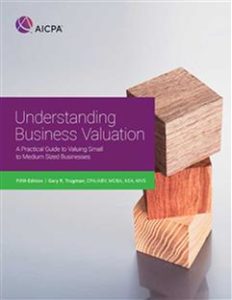Book Review – Understanding Business Valuation

Part primer (there is a statistics brush up lesson in Chapter 7), part advanced description of newer techniques (Chapter 25, which has been added since the Fourth Edition, covers option pricing models, fixed income valuation, early stage company valuation and the backsolve method), the book is a comprehensive, even-handed treatment of the arrows in our “BV quiver.” Mr. Trugman offers practical advice, ranging from tips for an airtight engagement agreement to a suggested template for a professional practice due diligence questionnaire.
There are contributions from others in the profession – Mark Zyla was the primary author of the chapter on valuation in financial reporting, and he offers advice and caveats on working with a client’s outside auditors (“…there are so many other people who are going to scrutinize your work that you may find yourself justifying what you did to others who have little or no knowledge about the intricacies of business valuation.”).
In his conversational style, Mr. Trugman peppers UBV with on point personal anecdotes to keep things lively. In a discussion of the wisdom of using a massive document request at the outset of an engagement, he offers the following transcript excerpt:
Attorney: Well then, Mr. Trugman, if you consider these items important to your valuation, and you did not receive them from my client, how can you expect to this court to believe that you did a credible job when you were missing about 70% of what you ask for?
Trugman: Gulp!
In stressing the importance of proper data gathering and vetting, Trugman tells the story of IRS counsel (his client) confirming in the 11th hour an 80% supermajority requirement, which gutted his valuation and erased a $150 million valuation gap (“I said, ‘Settle the case.’”).
Regarding pass-through entity valuations, Trugman provides a concise comparison of the S Corporation Models (e.g., Dan Van Vleet’s SEAM), including a summary of the values resulting from the application of five of the most popular, along with the following advice: “As with any other step in the valuation process, common sense should prevail when selecting a model to apply in any valuation.”
In a chapter on the asset-based approach, there is an interesting discussion and example of calculating economic obsolescence. And speaking of examples, the book is chock-full of them, making UBV an especially useful teaching tool. In fact, the Fourth Edition of the book is now used as a college-level accounting textbook.
The Fifth Edition of UBV should serve as a solid reference for many years to come.
James W. Brockardt
BCG Valuations
November 10, 2017
